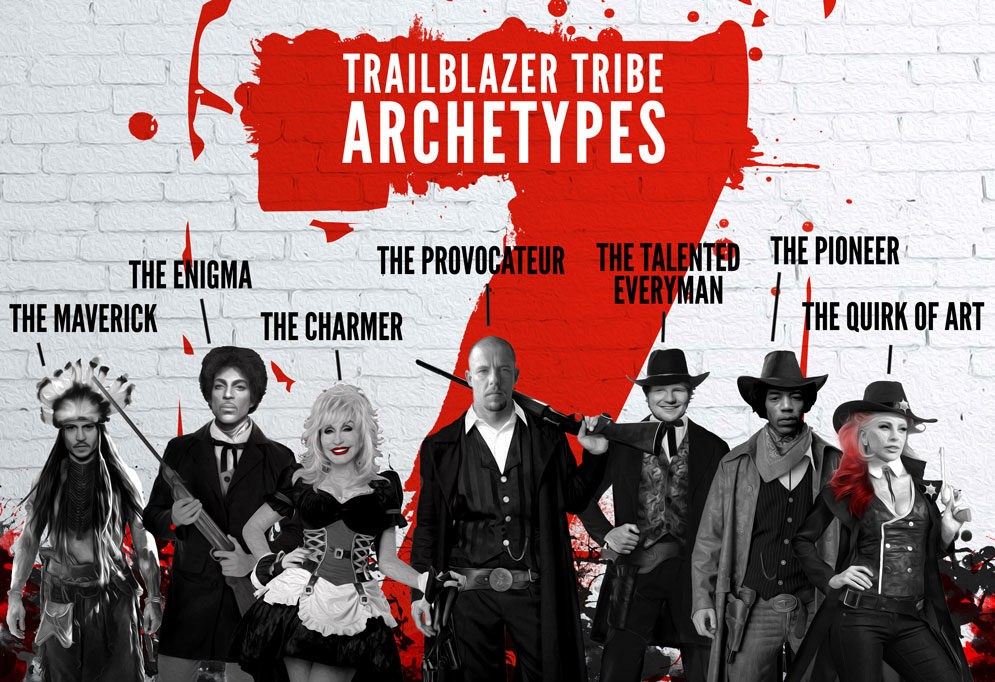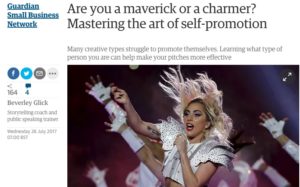 Ever since I became aware of Carl Jung’s theories about the human psyche, I’ve been fascinated by archetypes. The warrior, the priestess, the king, the hero – they are all motifs we instinctively understand and carry within us.
Ever since I became aware of Carl Jung’s theories about the human psyche, I’ve been fascinated by archetypes. The warrior, the priestess, the king, the hero – they are all motifs we instinctively understand and carry within us.
An archetype is a universal symbol of a collection of traits – the warrior is brave, strong and honourable; the priestess wise and intuitive. But there are light and shadow sides to all archetypes. The warrior might become the warmonger and the priestess the evil witch.
I had this in my mind the other morning when I was scrolling through news stories on my iPhone and saw the headline: “Why provocateur Katie Hopkins is the perfect symbol for our tribal age”.
The article in The Guardian read: “She is a provocateur whose aim is to generate outrage. She succeeds because so many liberals rise to the bait, turning a shallow nonentity into a martyr for free speech.”
Ms Hopkins presents a clear example of the shadow side of the provocateur: the desire to shock and provoke a reaction for the sake of it. She doesn’t appear to stand for anything except herself and her right to say whatever the hell she wants.
There are plenty of provocateurs who, whether you like them or not, do stand for something: Tracey Emin, Morrissey, Alexander McQueen, Russell Brand. They have an ability to spot trends and challenge social conventions.
Jung might have characterised these artists as archetypal rebels or outlaws. But other archetype collections do feature the provocateur – including the system I devised with my Trailblazing Creatives partner Nicky Moran.
The Trailblazer Tribe Archetypes evolved out of a conversation we had about how successful people in the creative industries sustained their careers over the long term.
We looked at a range of performers, artists and other creative types to identify how they had managed to stand out and thrive while others were ignored.
As a result, and also inspired by various personality tests we had both taken, we identified seven archetypes that describe high-profile creatives:
Maverick (Madonna, Johnny Depp)
Quirk of Art (Lady Gaga, Grayson Perry)
Enigma (Prince, Banksy)
Provocateur (Sacha Baron Cohen, Alexander McQueen)
Pioneer (Jimi Hendrix, Andy Warhol)
Charmer (Dolly Parton, George Clooney) and
Talented Everyman (Adele, Ed Sheeran)
We devised an online quiz to help lesser mortals identify their primary and secondary archetypes and tested it out on some friends and colleagues. (You can take it here.)
Thankfully, the feedback was promising: people resonated with their archetypes and could see how they could use them as a ready-made hook when talking about themselves and their work.
We also looked at the shadow side of each archetype and included the challenges each face in a report that is sent out to everyone who completes the quiz.
We pitched the idea to The Guardian’s Small Business Network and they ran this piece about the archetypes and the quiz.

Since then more than 500 people have taken the quiz and we’ve been receiving valuable feedback about how the archetypes show up in particular individuals.
“Realising I was a Quirk of Art/Pioneer tweaked my promotion technique to give me the confidence to show up,” says Tribe member, fashion psychologist and magazine editor Rebecca Weef Smith.
“People say I have a warm and encouraging style. I will get you comfortable, really relaxed – and then I will deliver a punch. I want to shock you out of your bullshit!” That’s Dorothy M – a true Charmer/Maverick.
Our focus is now on helping creatives use the blend of their primary and secondary archetype energies to tell a compelling brand story.
And if you’re a provocateur, we promise to help you avoid falling into the same shadows as Katie Hopkins.
Leave a Reply